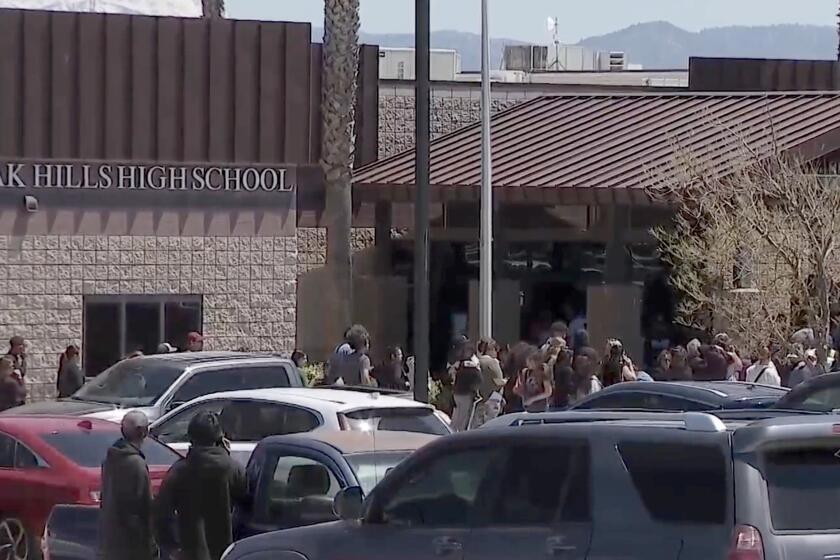Skinned zebra found dead on beach near Hearst Castle

Hearst Ranch told deputies that the zebra died of natural causes and was skinned before it was found on the beach. (Jan. 17, 2017)
A zebra that once belonged to a collection of wild animals at Hearst Ranch was found dead and skinned on a San Simeon beach Saturday after heavy rains carried it down a creek and into the sea, authorities say.
The carcass, which had much of its hide removed, was discovered just before 12:30 p.m., said Sgt. Nate Paul of the San Luis Obispo County Sheriff’s Office.
“There is no indication of foul play,” the sergeant said. “There is no indication the skinning was a criminal act.”
Hearst Ranch told deputies that the animal died of natural causes. The age and sex of the zebra were not known.
The zebra was likely trying to cross Pico Creek, but was swept away and possibly drowned, said Ben Higgins, Hearst’s director of agricultural operations.
“We have received over 40 inches of rain on higher elevations of the property, and many of the waterways are flowing extremely quickly,” he said. “They are very dangerous to both animals and people.”
Higgins said ranch officials “are quite certain” the zebra was skinned after it was swept into the ocean and later washed onto the beach.
“As distasteful as this whole situation is, our conversations with law enforcement indicate that no crime may actually have been committed by this individual,” he said.
Andrew Hughan, a spokesman for the California Department of Fish and Wildlife, said it is unclear who skinned the zebra after it washed ashore.
Hughan said the department is working with Hearst Ranch to dispose of the carcass.
Before its death, the animal belonged to a herd of 113 zebras that can be seen roaming the hillsides off Highway 1 near Hearst Castle in San Simeon. The property is also home to American bison and Rocky Mountain elk.
“They of course appear similar to domesticated horses, but they are certainly not tame,” Higgins said. “They are completely wild, free-roaming animals which reside largely, but not exclusively, on Hearst property.”
The famed castle built by publishing magnate William Randolph Hearst was donated to the state of California in December 1957 and now belongs to a state park. The Hearst family continues to operate a ranch adjacent to the property.
The original Hearst property featured lush gardens, an art collection and extravagant pools and terraces. It was also home to a zoo. Hearst began dismantling the zoo in 1937 because of financial difficulty, according to the estate’s website.
Some of the animals were sold or donated to public zoos; others remained on the ranch and were allowed to roam free.
For breaking news in California, follow @VeronicaRochaLA on Twitter.
ALSO:
60-year-old gorilla, the first to be born in a zoo, dies in Ohio
Preschool takes Norwegian kids out to watch reindeer get slaughtered
Grandfather fights off woman trying to kidnap granddaughter in Northern California park, police say
UPDATES:
12:55 p.m.: This article was updated with comments from Ben Higgins, director of agricultural operations for Hearst Ranch, and from Andrew Hughan, a spokesman for the California Department of Fish and Wildlife.
This article was originally published at 11:15 a.m.
More to Read
Start your day right
Sign up for Essential California for news, features and recommendations from the L.A. Times and beyond in your inbox six days a week.
You may occasionally receive promotional content from the Los Angeles Times.






